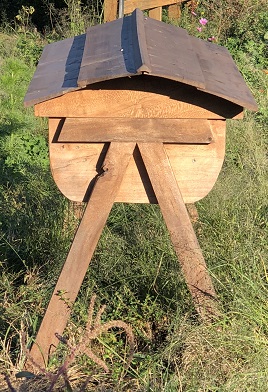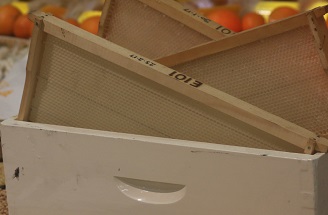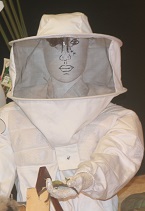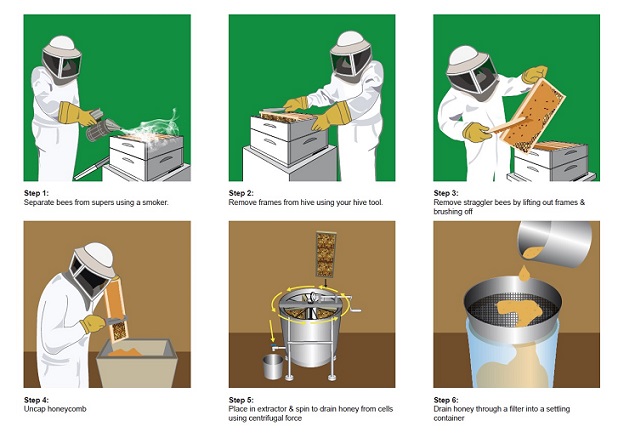Sneak Peek
This is a self Paced 20-hour course to help you understand and Learn About Bees, Beekeeping and Honey.
- Develop an understanding of how to manage bees in the environment, and in the hive.
- Learn to produce and harvest honey and understand more ways of using what you produce.
This short course can benefit both people who already keep bees, as well as people who aspire to keep bees.
Bees occur all over the world and honey has been farmed from bees for thousands of years. To most people, a bee is thought of as
something that lives in a hive, produces honey and can sting you. Because bees play a vital role in pollination of crops, it’s important to
improve diversity of bee populations and ensure there are enough of them to withstand any future threats. Besides pollination, bees provide us with wonderful natural honey too and for many people this is their main reason for keeping bees.
Our 20 hours courses are self paced and will help you understand a topic in a short amount of time.
COURSE CONTENT- What do you learn?
There are 8 lessons as follows; with interactive self assessment tests to revise what you have learned at the end of each lesson.

Lesson 1: Scope and nature of bees and beekeeping
- Types - honey bee, Asian bee, bumble bee, Solitary bees, etc
- Significance of bees
- Legal restrictions
- Locating a hive - factors to consider
- Bee Taxonomy - different families
- Hive bees - Apidae family
- Types of Honey bee - including hybrids
- Bred bees
- Types of Stingless Bees
Lesson 2: Bee biology
- Bee physiology
- Exoskeleton, head, thorax, abdomen
- Life cycle
- Castes and their roles
- Queen
- Pheromones
- Other factors that trigger swarming
- Role of Royal Jelly
- Worker Bees
- Drones
- Nurse bees, Field bees
- How Bees Produce Honey
- Chemistry of Honey - proteins, amino acids, vitamins, minerals
- Bee Behaviour
Lesson 3: Equipment, materials, obtaining bees
- Obtaining bees
- To Catch a Swarm
- Buying in Bees
- Tools and Equipment - bee brush, blower, smoker, emlocks, escape board, queen catcher, queen muff, top feeder, spur wheel embedder etc., hive tool
- Bee proof suit
- Step by step honey extraction
Lesson 4: The Hive – types, construction, inspection
- The hive
- Lids
- Supers
- Bases
- Excluder
- Frames and Foundations
- Finishes
- Choosing the right Hive
- Langstroth Hive
- British National Hive
- Top Bar Hive
- Warre Hive
- Darlington Hive
- Straw Skep Hive
- Log Hives
- Keeping Stingless Bees
- Inspecting hives -step by step
Lesson 5: Working Bees: seasonal husbandry and harvesting
- Seasonal tasks - summer, autumn, winter, spring
- Feeding bees to Avoid Starvation
- Making a syrup
- How bees are Fed
- Dry Sugar
- How often to Feed
- Feeding bees Pollen Substitutes
- Moving Hives
- Reversing Brood Chambers
- Swarms
- Preventing a Swarm
- Bee Hive Cells -swarm, queen, worker and drone cells
- Drone Control
- Splitting Colonies
- Honey production
- Collecting and Processing
- Uncapping
- Wintering
- Collecting and Processing Beeswax
- Working with the different bee species
- Review what you have been learning
- Propolis Collection and Processing
- Apitoxin Collection and Processing
- Collection and Processing Royal Jelly
- Collecting and Processing Pollen
- Working with Different Bee Species
- Honey Production with Stingless Bees
Lesson 6: Bee Health Management
- Contributing Factors to Bee Health
- Indication of Health Problems
- Overview of Problems
- Pests
- Varroa Mites
- Acarine Mites
- Amoeba
- Bee Lice
- Wax Moths
- Wasps, other Insects and Larger Animals
- Diseases
- American Foulbrood, European Foulbrood
- Chalkbrood
- Small Hive Beetle
- Nosema Disease
- Viruses
- Other Problems
- Pest and Disease Control
- Quarantine and Hygiene
- Self Medication by Bees
- Supporting Bees
- Care with Pesticides and other Chemicals
Lesson 7: Bees in the Landscape
- Why Honeybees make Good Pollinators
- Native Bees
- Introduced Bees
- Wild or Feral Bees
- Helping Bees by Planting
- When are Honeybees Most Active
- Attracting bees to your garden
- How far will bees Travel
- Plants that Attract
- Dealing with Stings
Lesson 8: Using Honey and Bee Products
- Medicinal Uses for Honey
- Risks of Honey Use
- Uses for other Bee Products
- Beeswax
- Storing Honey
- Uses for Honey in Food
- Mead
- Cooking with Honey -salads, savoury, sweets and desserts
Final Assessment
SNAPSHOT OF WHAT IS INVOLVED
Because bees play a vital role in pollination of crops, it's important to improve diversity of bee populations and ensure there are enough of them to withstand any future threats. Besides pollination, bees provide us with wonderful natural honey too and for many people this is their main reason for keeping bees.
Bees are not just rural dwellers. They can be kept in hives on balconies, rooftops and in city gardens. Keeping bees for honey actually works well on a small scale because overcrowding of populations is completely unnatural – like it is for most species. Honey bees which are mass farmed are more susceptible to disease and parasites.
In order to keep them in good health, it's important to develop an understanding of how the colony works as a complete living entity, and how it interacts with the environment including other living organisms. Awareness of interconnectedness is one of the basic principles of permaculture.
The Hive
The most widely used beehives consist of a base, a brood box where the queen resides which holds the brood frames, a separation panel or excluder to keep the queen inside, an upper super box which holds the honey frames, a lid, and some sort of fastening device to hold the whole lot together so it doesn't fall apart in a strong wind. Beehives are made in a number of sizes with boxes usually holding 8, 10 or 12 frames and coming in 3 different depths. When starting off try to have boxes of the same dimensions so all the frames are of the same size and everything fits together neatly.
Lids
There are two types in use.
- Telescopic lids fit tightly and neatly over the box. Although they can't be knocked off, they don't allow any ventilation. This is not a problem in winter indeed it helps to insulate the bees but in summer the lack of ventilation may cause overheating.
- Migratory lids usually have four ventilation holes in the top. These lids provide greater ventilation and make hives stackable which is ideal if you decided to transport your hives. The reason for this is that bees may become agitated when being moved; unless there is good ventilation, the heat created can cause honey and wax to melt, running all over the hives and killing the bees inside.
 Supers
Supers
'Supers' is the name given to honey super boxes. These are usually made from pine and they contain the honey frames. The eight frame hive (eight frames per box) is light and easy to handle. If weight is a problem apiarists use 1/2 or 3/4 depth boxes. Boxes either have dovetailed or rabbited ends. Dovetailed ends look attractive but will rot faster. Rabbited ends are cheaper and have less end showing.
Bases
Pine board bases are about the best, hardboard and other composite boards tend to rot and don't last as long as pine. Marine plywood is another good choice. For ease of dismantling, do not nail the bases to the supers. The front of the bottom board should stick out by about 3cm so the bees can land on it.
Excluder
This is a screen placed between the brood chamber (the bottom box) and the next super to prevent the queen from entering the honey chamber. The holes in it are only large enough for the workers to pass through, so the queen must stay below to lay eggs while the workers store all the honey upstairs. Thus whole supers of honeycomb may be removed without disturbing the bees' breeding activities. There are three types of excluder. The first is perforated metal. This is not my choice because if there is a slight rough edge on the perforations it will fray the wings of the workers. Also, metal excluders can become very cold in winter Secondly, there are wire excluders. Although they give the bees unobstructed access they are expensive, and the wire can be damaged. However, wire excluders allow easy insertion of miticide strips into the brood nest. This is ideal for varroa control and whilst it's not an Aussie problem at present, it is probably just around the corner! Finally, there are perforated plastic types. These are the cheapest and currently the most widely used. They also last a long time and the bees don't build on them as much.
 Frames and Foundations
Frames and Foundations
Frames enable easy inspection because they prevent the honeycombs from breaking when they are lifted out.
Frames are usually wooden and hold the honeycomb in position inside the hive. Steel wires are secured within the wooden frame exterior. It comes in a roll and for the average person one roll would last for years. Wire can be either plain or stainless. Plain will get rusty, which doesn't really matter, but it w on't stretch like stainless can. Care must be taken not to get any kinks in the wire.
A sheet of beeswax foundation is fitted onto the wires to ensure the bees build straight combs. Eyelets are used to prevent the wires cutting into the frame's end bars.
Finishes
Hives need to be dry inside and well-ventilated. Pine and other timbers should be treated to stop them rotting. Rot is a serious problem in hives, so we soak all our boxes, tops and bases, in copper wood preservative before we paint them.
Don't use preservatives which could contain insecticides or which are not permissible for use on beehives. Some people dip timbers in paraffin wax or even pour beeswax to preserve them but this increases the fire risk.
Paint the inside of your supers because while the bees are curing their honey, condensation forms on the inside of the hive. Don't use lead-based paints - acrylic paints are best. Wood stains can also be used.

WHY STUDY THIS COURSE?
- Explore the possibility of keeping bees and producing honey
- Get better at keeping bees and producing honey
- Improve pollination of fruiting plants in an orchard, market garden or elsewhere.
- Become more self sufficient in your food production
- Start a micro business producing honey and/or bee related products
How does this course work?
You can enrol at any time. Once you have paid for the course, you will be able to start straight away. Study when and where you like. Work through at your own pace.
You can download your study-guide to your smart phone, tablet or laptop to read offline.
There are automated self-assessment tests you can complete at the end of each lesson. You can attempt these as many times as you wish and each time, upon completion, you can see your results. You will need internet access to complete the self assessment tests.
At the end of the course, you are presented with a large assessment which can be attempted online, anywhere, anytime. If you achieve a 60% pass in the exam; you immediately receive a downloadable certificate of completion with your name on it. If you do not achieve a 60% pass rate, you can contact us to re-sit your exam. ( email- admin@acs.edu.au )
Contact us at anytime if you have any issues with the course. admin@acs.edu.au